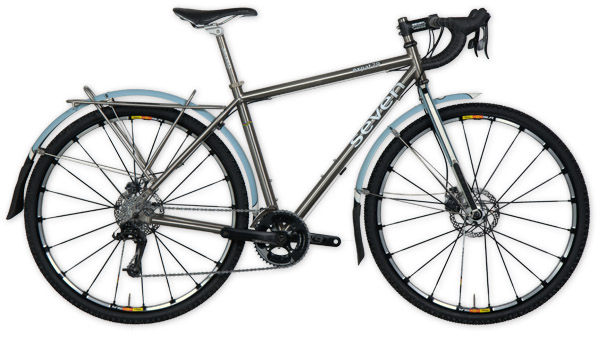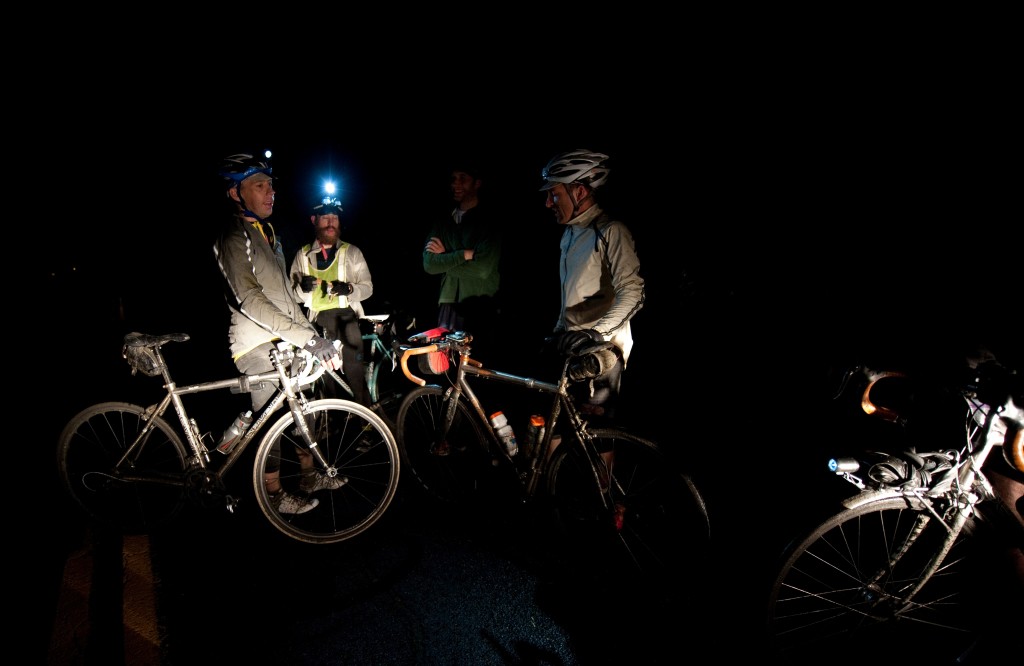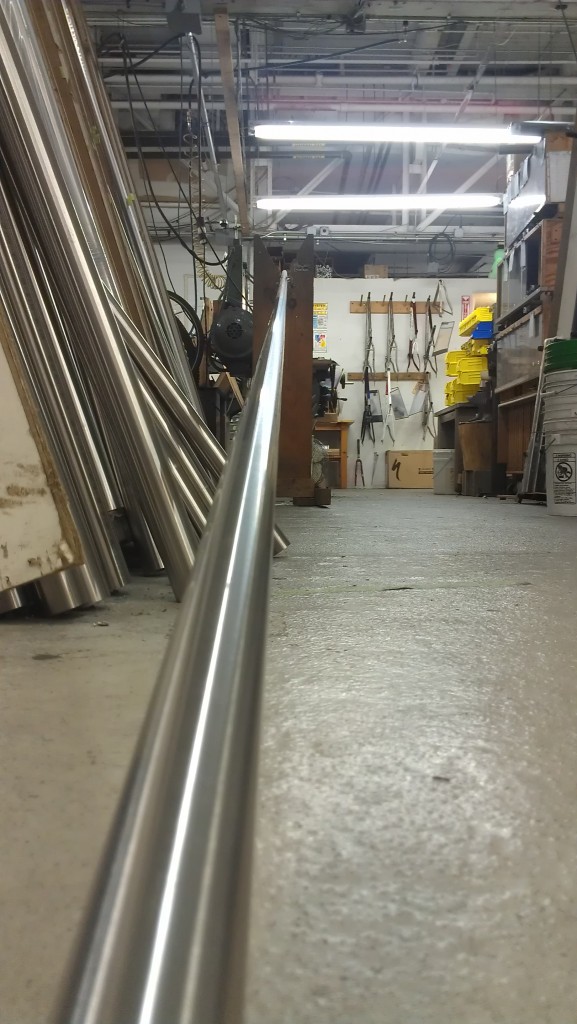Last week we talked about Going Up, the process of designing a climbing bike. This week we look at what goes into a long distance bike, which might be a century bike, a touring bike or might be a full-blown randonneuring machine. We build these on our Axiom platform or our Expat platform typically, but as with everything we do, it’s custom, so the features are more important than the model name.
These sorts of bikes usually have comfort as their primary design goal. Performance remains important, so drivetrain stiffness is still desirable, but one of the keys to performing over long distances and after many, many hours in the saddle is comfort.
Comfort in this regard isn’t just about how the rider feels in the moment, but how fresh he or she can remain. Muscles that have not been pummeled by an overly stiff frame for eight hours are better able to sustain effort in the 9th and 10th hours of pedaling. There is the next day to consider as well. On multi-day tours, the need to wake up in the morning rested and recovered can be the difference between fun and misery.
Titanium is a particularly good material for long distance bikes, and our ability to refine this tubing for the individual rider means we can keep those riders fresh and comfortable according to their own preferences. The tube butting process consists of removing material along the length of the tube to make it strategically compliant. The more aggressively the tubes are butted, the more compliant the frame becomes, the better it soaks up chatter and impacts from the road. Steel also shares these properties, just at a slightly greater weight.
As with the climbing bike we discussed last week, there are a number of factors to balance, comfort and performance being the most obvious. Stability and handling are also critical to a good long distance bike, a more relaxed geometry, a longer wheelbase. You want to be able to ride hands free to rest hands and shoulders. You want good handling at low speed, even carrying a load, which brings us to features and options.
Touring bikes used to have cantilever brakes as a default, because they let you run a wider tire with a fender, but the advent of better medium reach fork/brake combinations and disc brakes have radically improved braking performance and given riders more options for bike set up. The touring triple has given way to the compact double crank, with wide range cassette to achieve the same gearing ratios. Rack and fender mounts are very popular on long distance bikes too, as are our custom racks, which can be built to fit the specific bags, panniers and lighting systems you want to run. Dyno hubs and front facing light mounts keep riders going into the night.
It is well-nigh impossible to get a great long-distance bike off the shelf. The unique attributes that keep a rider comfortable over long periods of time with the features and options and component choices that suit them make each of Seven’s “Go Far” bikes special.



